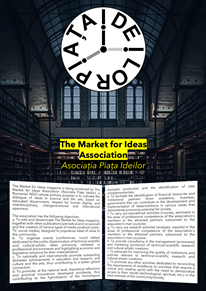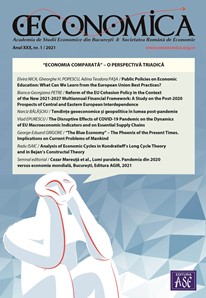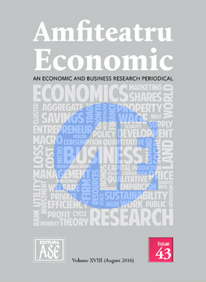
What Is Blockchain? An introduction for laymen
During the age of the crusades, several knightly orders were formed out of international groups of feudal knights to protect pilgrims to the Holy Land. In the interludes between the various wars, the number of pilgrims would grow, seeking salvation and other personal benefits, such as the prestige of having performed the pilgrimage. The Templars were one of the groups approached by these medieval tourists and were asked for protection on the long road against robbers. The trend continued and there was a growing need for protection. Since the Templar Order had a limited number of members, they became overwhelmed and they came up with a solution.
They invented a code.
Charlie Munger: “The fact that it’s clever computer science doesn’t mean it should be widely used, and that respectable people should encourage other people to speculate on it”.
Whenever somebody wanted to travel, but could not be accompanied, they went to the nearest Templar, deposited the amount of currency they had and received in return an encrypted sequence of characters. With the code, the travellers could get going without protection, without fear of being robbed of their coins along the way. Once they reached the destination, they got in touch with a Templar and provided the encryption. Since the code was known only within the Order, the Templar knew what the travellers initially deposited and gave them the equivalent.
What does this have to do with blockchain?
Encryption.
Blockchain is a technology that allows information to be stored encrypted, anonymously, safe and in a chronological order.
Imagine you are in a speeding car on a one way, one lane narrow road and you see a Stop (barrier you cannot cross). You slow down and eventually stop. While you slow down you press the “alert” button in the car in order to signal the car behind you to also slow down. Once the car behind you also stopped then you can press the alert button since it is no longer needed.
Every following car does the same thing. As cars add up in the queue you can call the whole thing a chain of cars.
Warren Buffett: “The asset itself is creating nothing”; “…if you don’t understand it, you get much more excited”.
Each car has a car licensing plate that is unique. There are no 2 identical numbers on the plates of the stopped cars. Each driver (except the one in the first car) can see the plate number of the car in front of him and the plate number of the car behind him. Each driver (except the one in the first car) in the chain can confirm the order of only 3 cars (the one in front, his own car and the car behind him).
If an incoming new car decides that it does not want to wait in the queue and wants to cut the line by going off-road, it would cheat the queue, pass as many cars in the queue as it wants, but eventually (since nobody in the queue wants to let it cut the line) it will reach the Stop and it will have to wait for the entire chain of cars to pass because nobody wants to let it get in the known order of arrival.
It not only lost time, because while it was passing the queue other drivers properly stopped at the end of the queue thus losing its potential order in the chain, but it also lost the trust of the entire queue that was in front of it, now branding the driver as someone who does not respect norms.
In order to easily understand what blockchain is about, the following key-terms need to be grasped; continuing using the analogy, they would have the following equivalents:
- Block = Car;
- Hash = Car number plate;
- Blockchain = Chain of cars.
- Genesis block = First car arrived at the Stop;
- Block data = The load of each car;
- Hacker = The car which tried to cheat the queue;
- Blockchain miner = The passengers in each car.
There are multiple structures for different blockchain structures, however the most common one is the linear one, which can be seen in the following image:

- A block is a single element within the chain and it has the following characteristics: block hash, block data, previous block hash, time stamp.
- The hash of a block is unique; it can be considered the fingerprint of the block, it is its identifier.
- The block data is different depending on the purpose of the blockchain, however it usually contains information between 2 parties. For example, Bitcoin block data contains the details of the entity sending money, the details of the entity receiving money and the amount of Bitcoin that is sent.
- The very first block in each chain is the one that contains the initial information of the blockchain and it does not contain a previous block hash, that is why it is called the genesis block.

Blockchain expansion
In the linear structure, once the genesis block (Block 0) is created, its hash can link a new block (Block 1). After Block 0 and Block 1 are linked, the hash for block 1 is generated and it can accept a new block as well. After Block 2 and Block 1 are linked, the hash for block 2 is generated and it can accept a new block, etc.
Bill Gates: “As an asset class, you’re not producing anything and so you shouldn’t expect it to go up, …Bitcoin and ICOs, I believe completely [they’re some] of the crazier, speculative things”.
The vector of the chain is relative. Using the initial analogy, you can imagine that the road is oriented in any way: W-E, E-W, etc.
- The blockchain miners are the computers that confirm the order of the blocks within the chain. Depending on the blockchain’s purpose, using the processing power offered by graphic cards, the miners confirm the mathematical equation resulted after each block addition to the chain.
There is no hard rule. However, on most blockchains, in order for a new block to be added, it is needed that the majority of the miners confirm the order of the whole chain before the new addition.
Using the initial analogy, if somebody wanted to check the order of the car queue, the only way to do it would be to have the majority of the car passengers turn on the signal lights in the same order as they arrived.
- A hacker would successfully cheat the queue only if it had the majority of the queue allow it to do so.
Blockchain Purpose
The purpose of the blockchain technology is to cut out the middleman and replace it with computer technology due to its characteristics: information stored encrypted, anonymously, safe and in a chronological order.
Long story short, any type of industry that requires information to be stored in a chronological order could be disrupted by blockchain technology. Traditional industries that blockchain can disrupt: Accounting and Book-keeping; Banking; Charity; Cloud storage; Crowdfunding; Cyber Security; eCommerce & eServices; Forecasting; Gambling; Insurance; Health Care; Real Estate; Transport & Ride Sharing; Voting; etc.
Traditional Centralized Middleman Trust:

Modern Computer Decentralized Trust:

Some subjective questions (instead of conclusion)
Where should trust really stay?
Looking back at humanity’s great history, or far ahead into a dark future, is blockchain a technology that humanity really needs?
Can’t we do something better with all the electric power that is consumed on mining?








